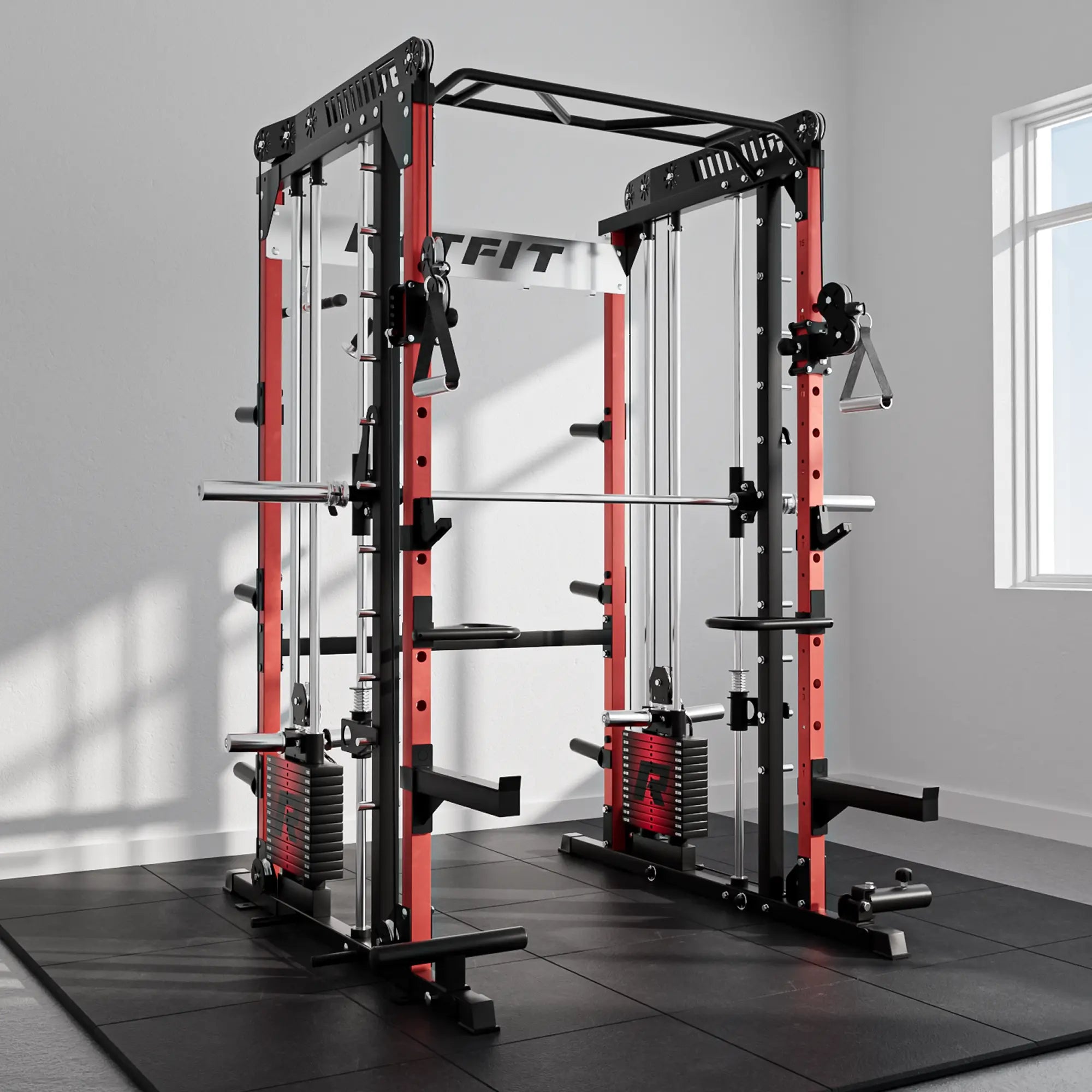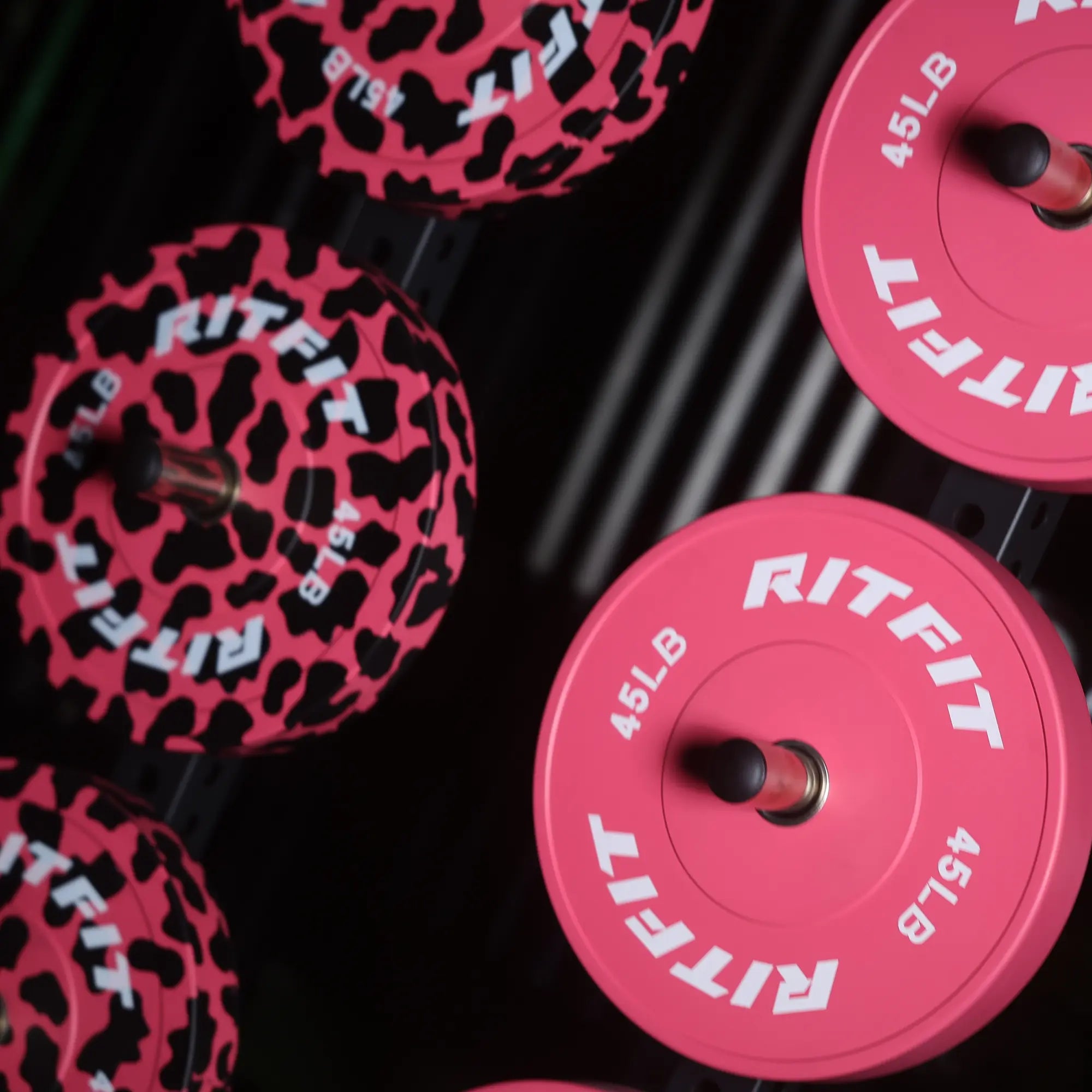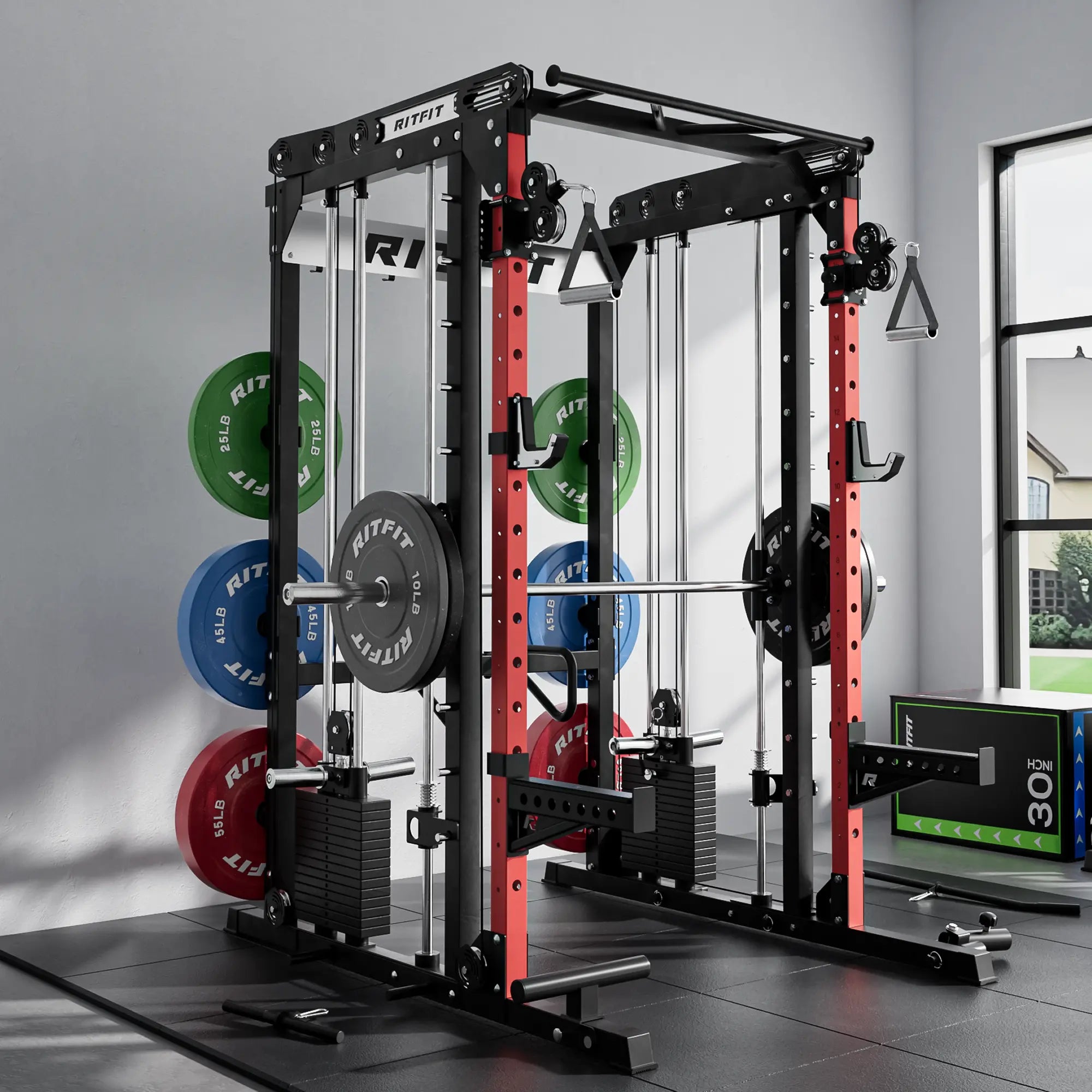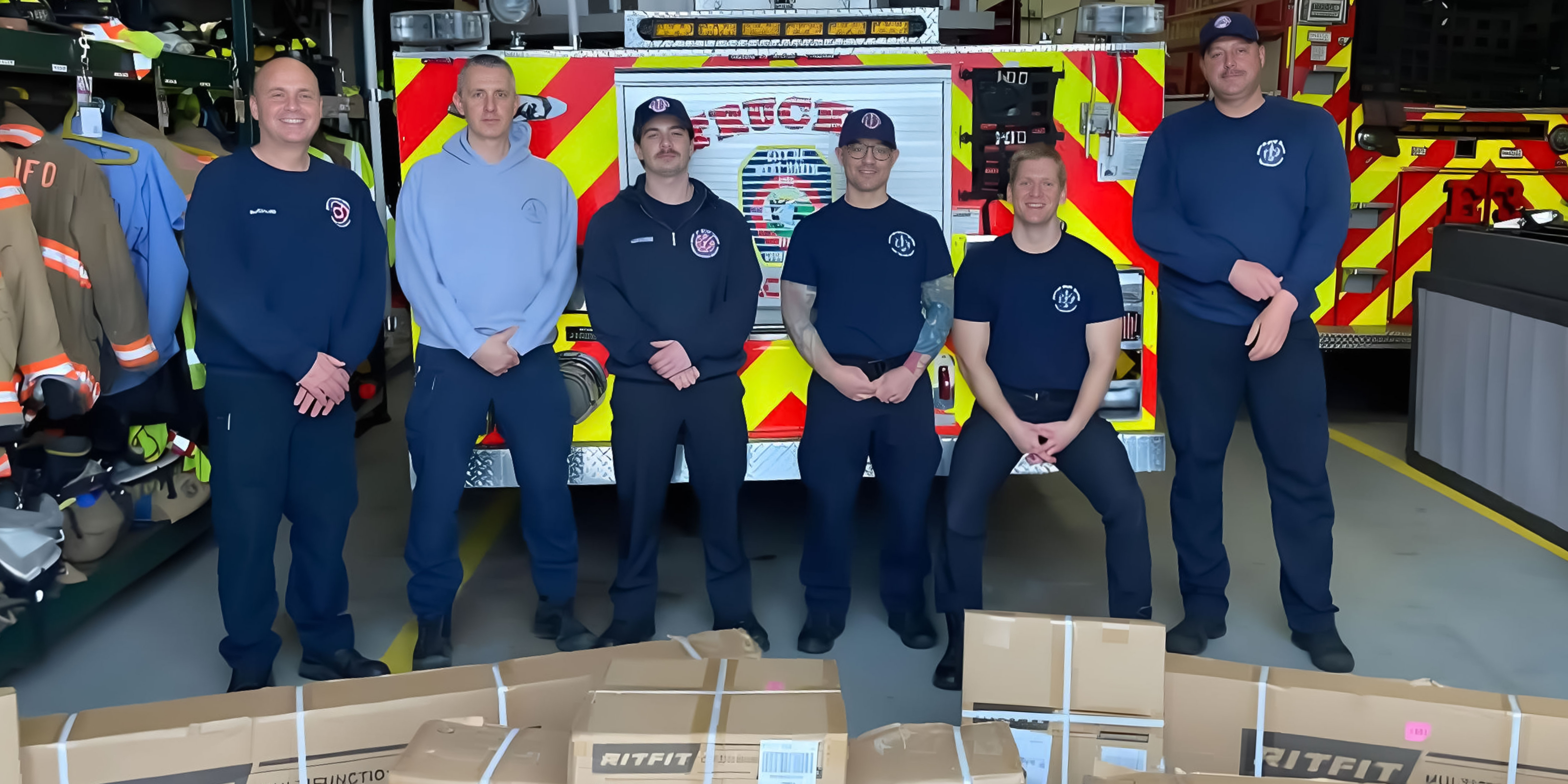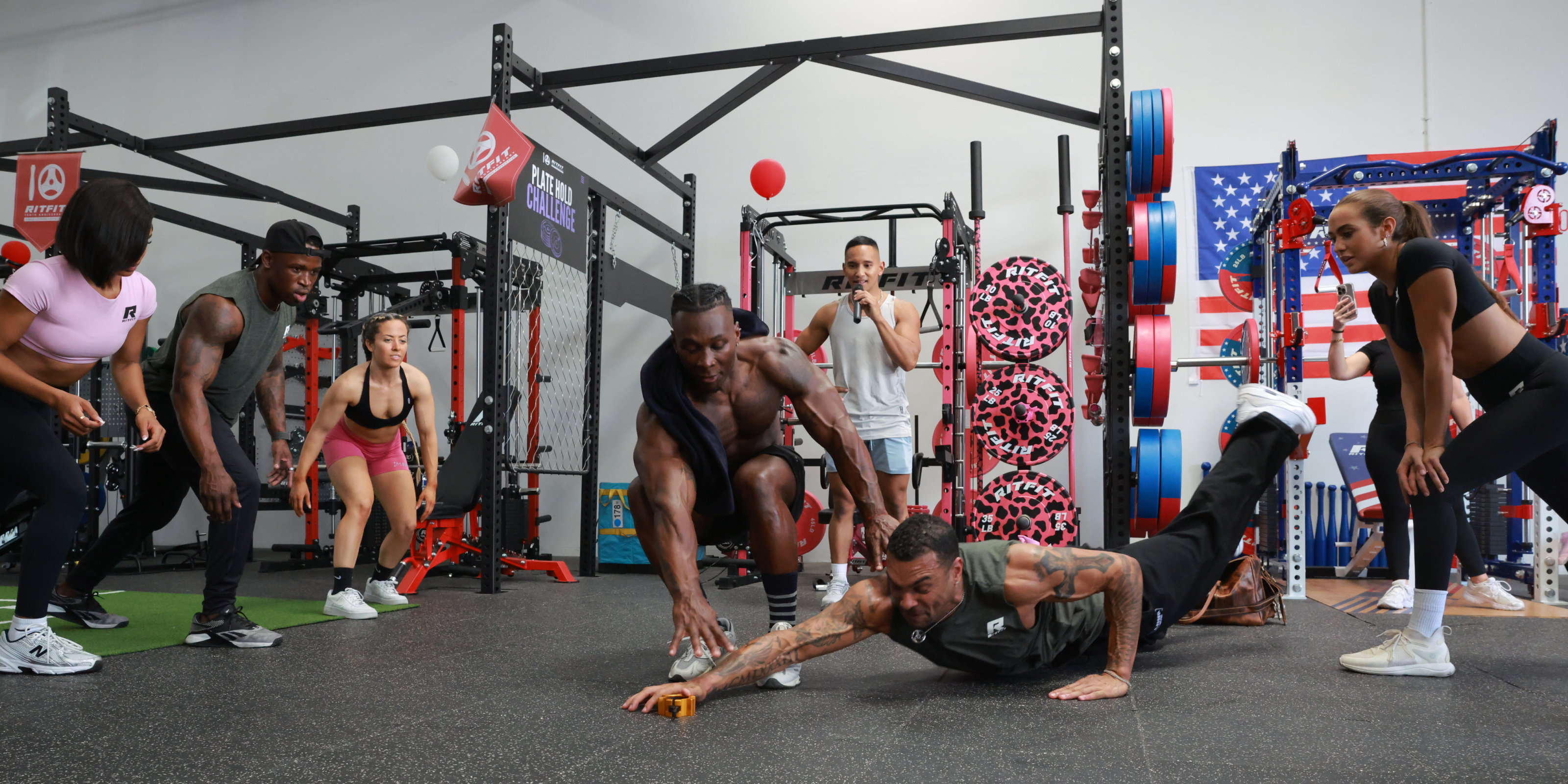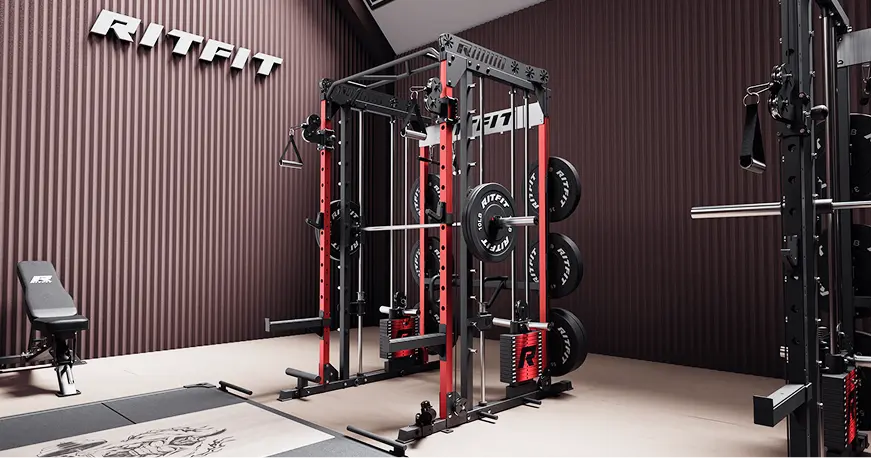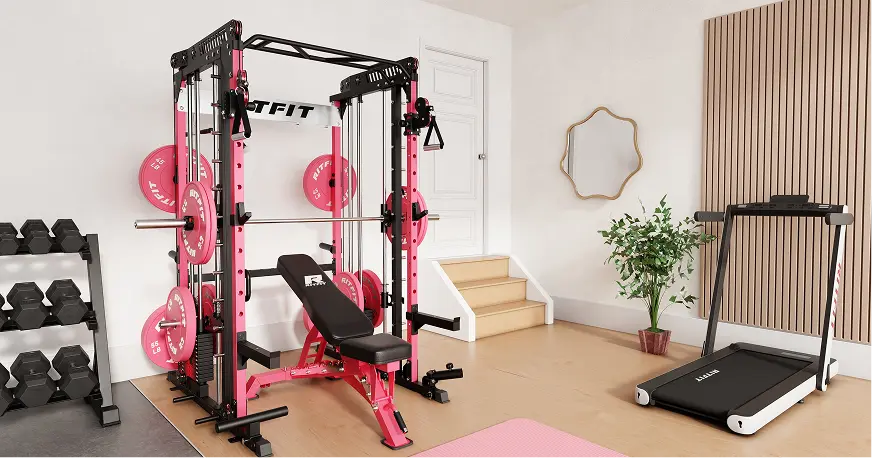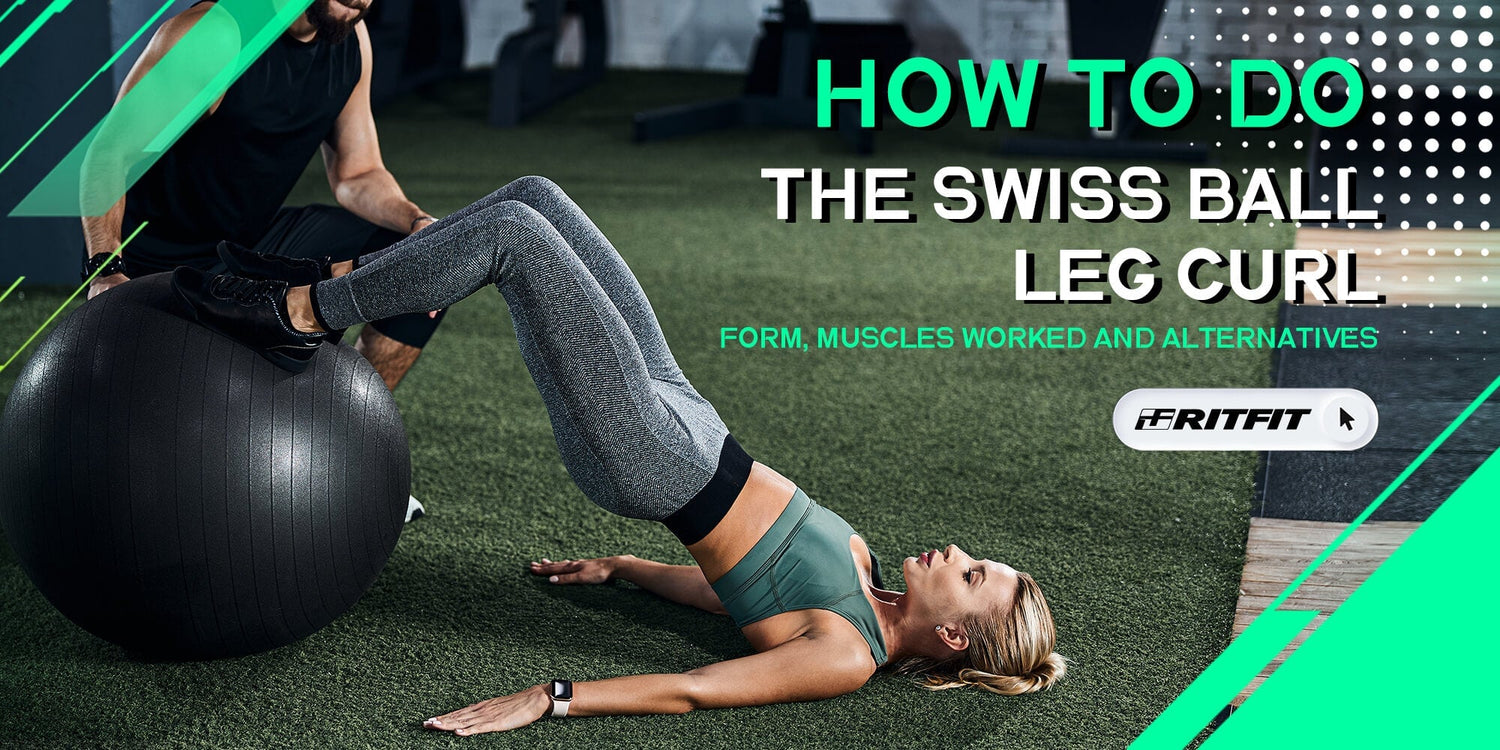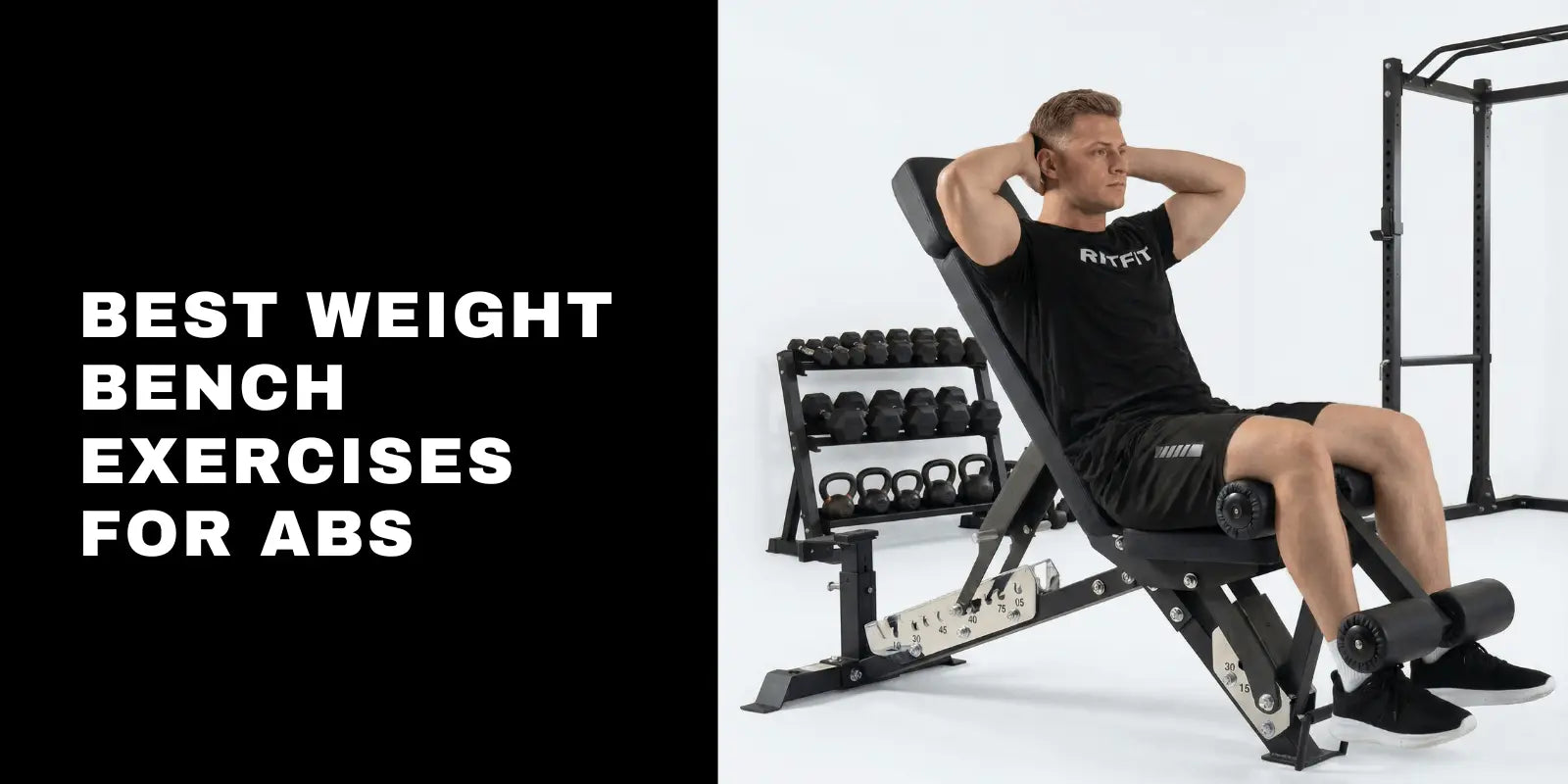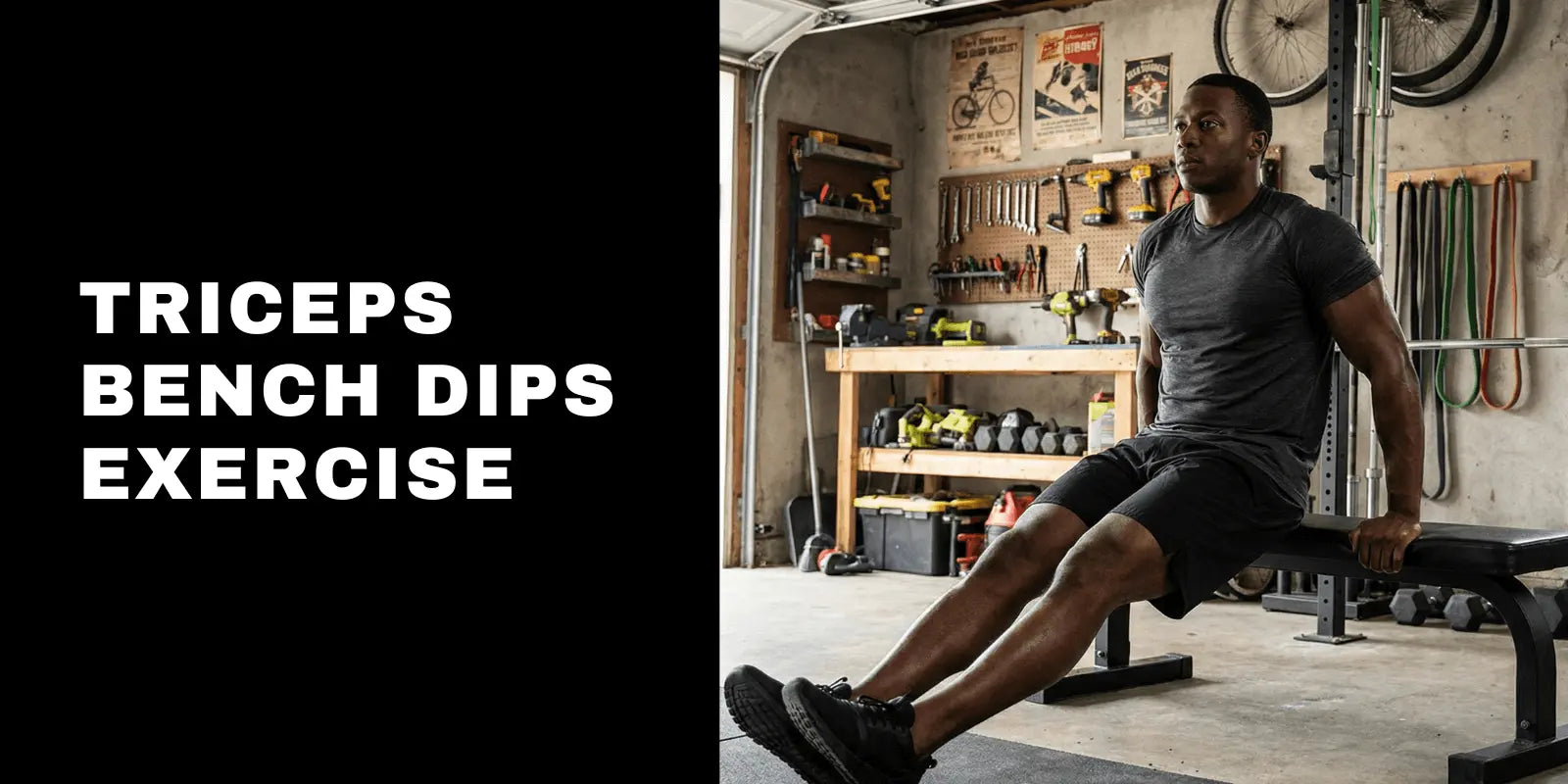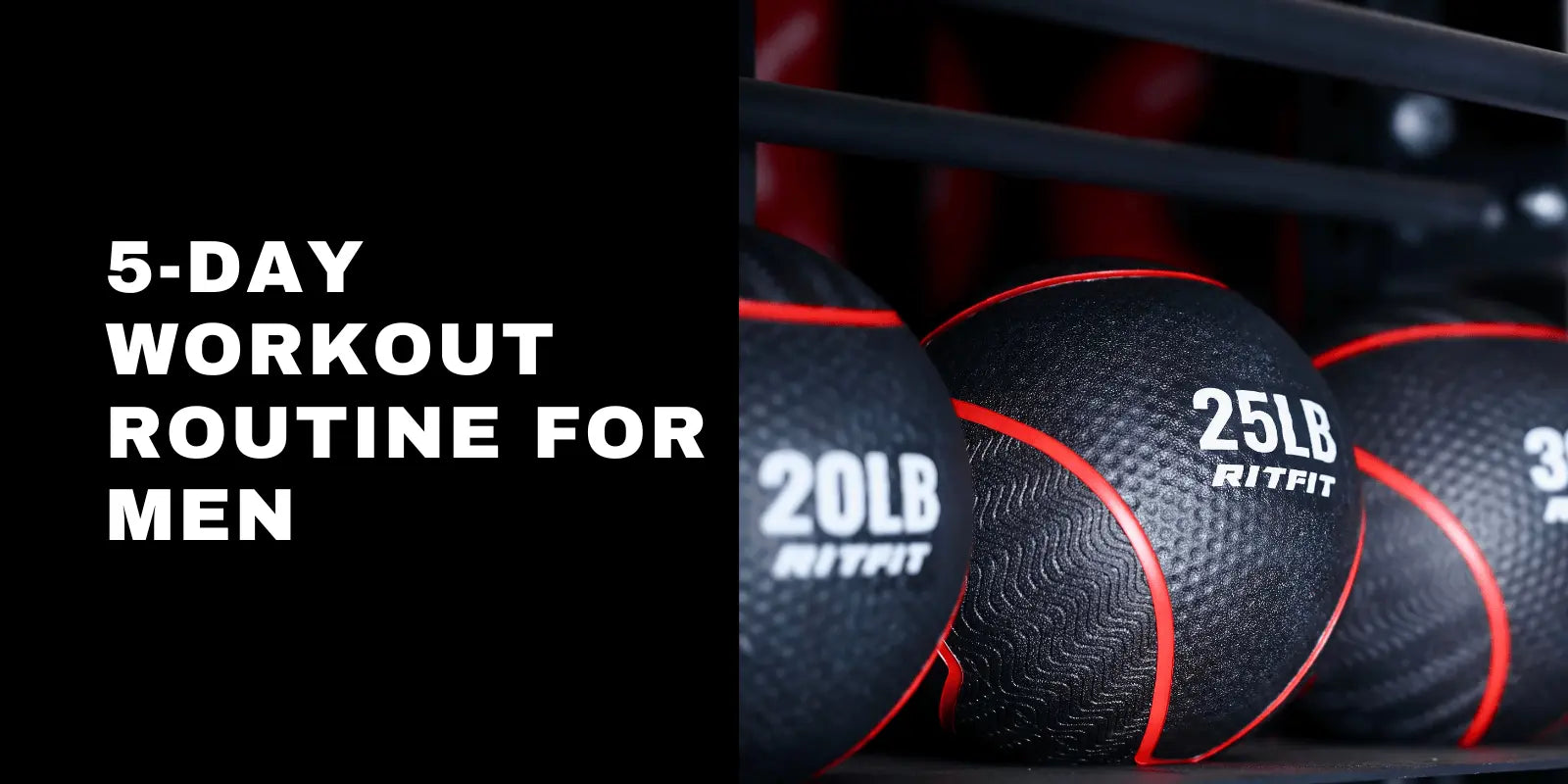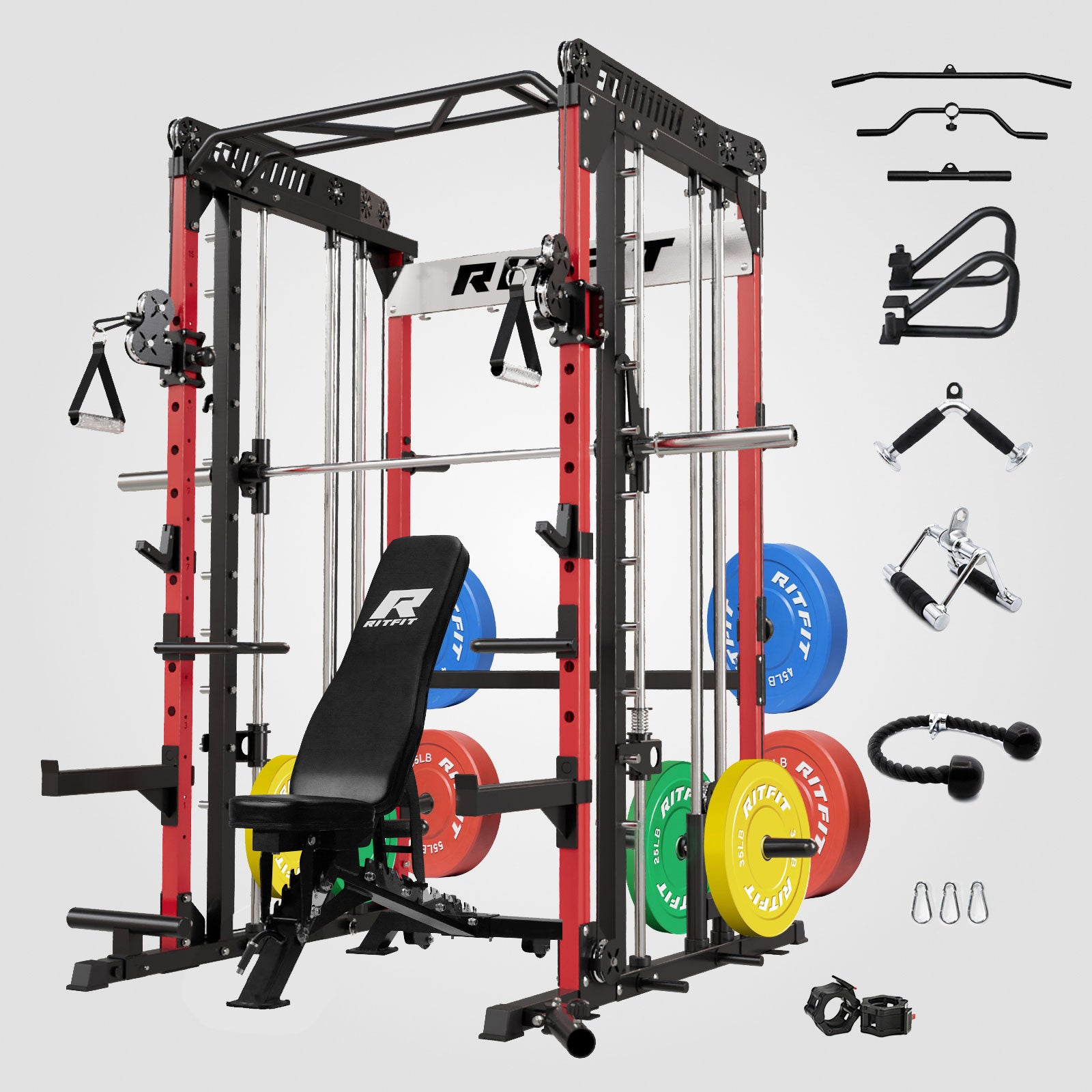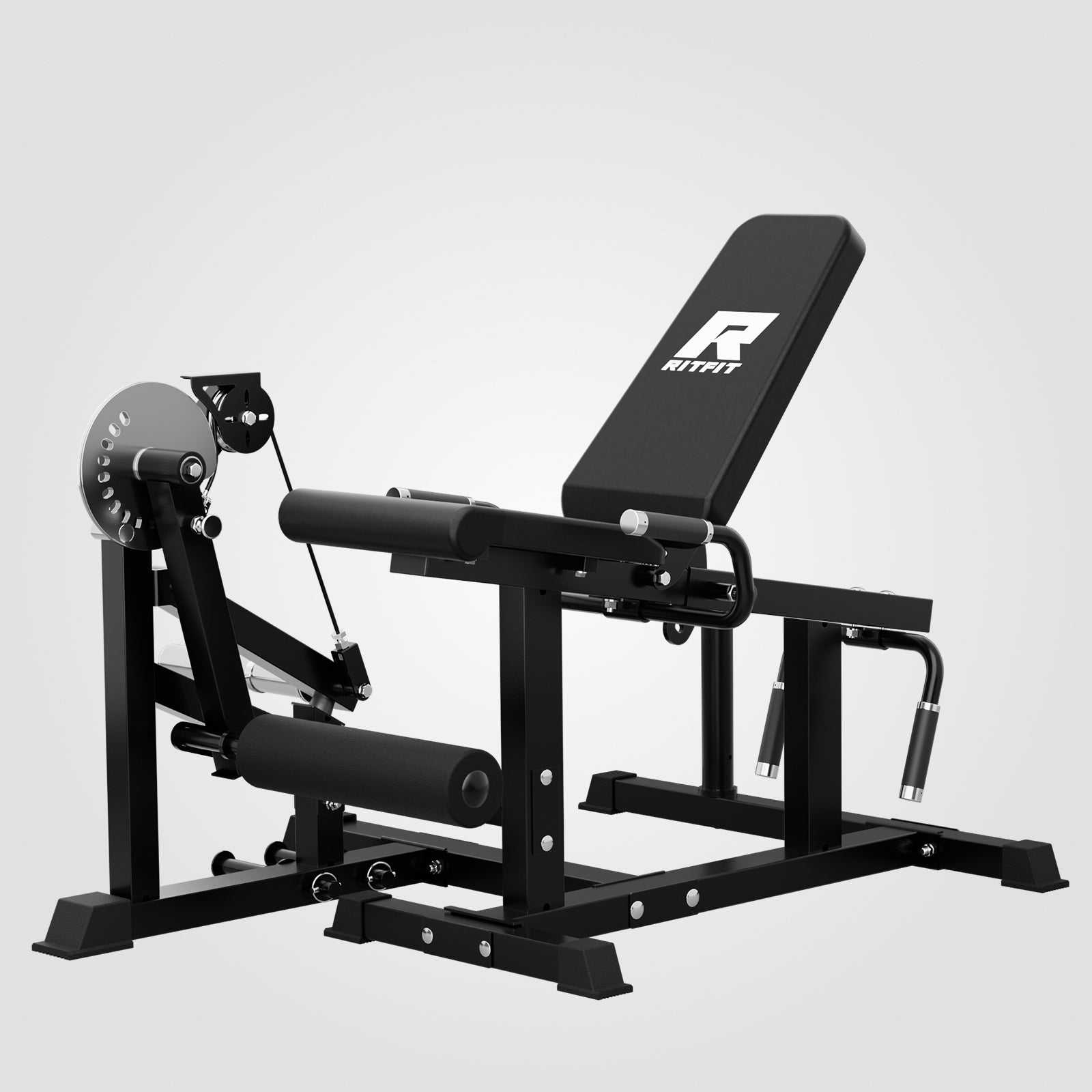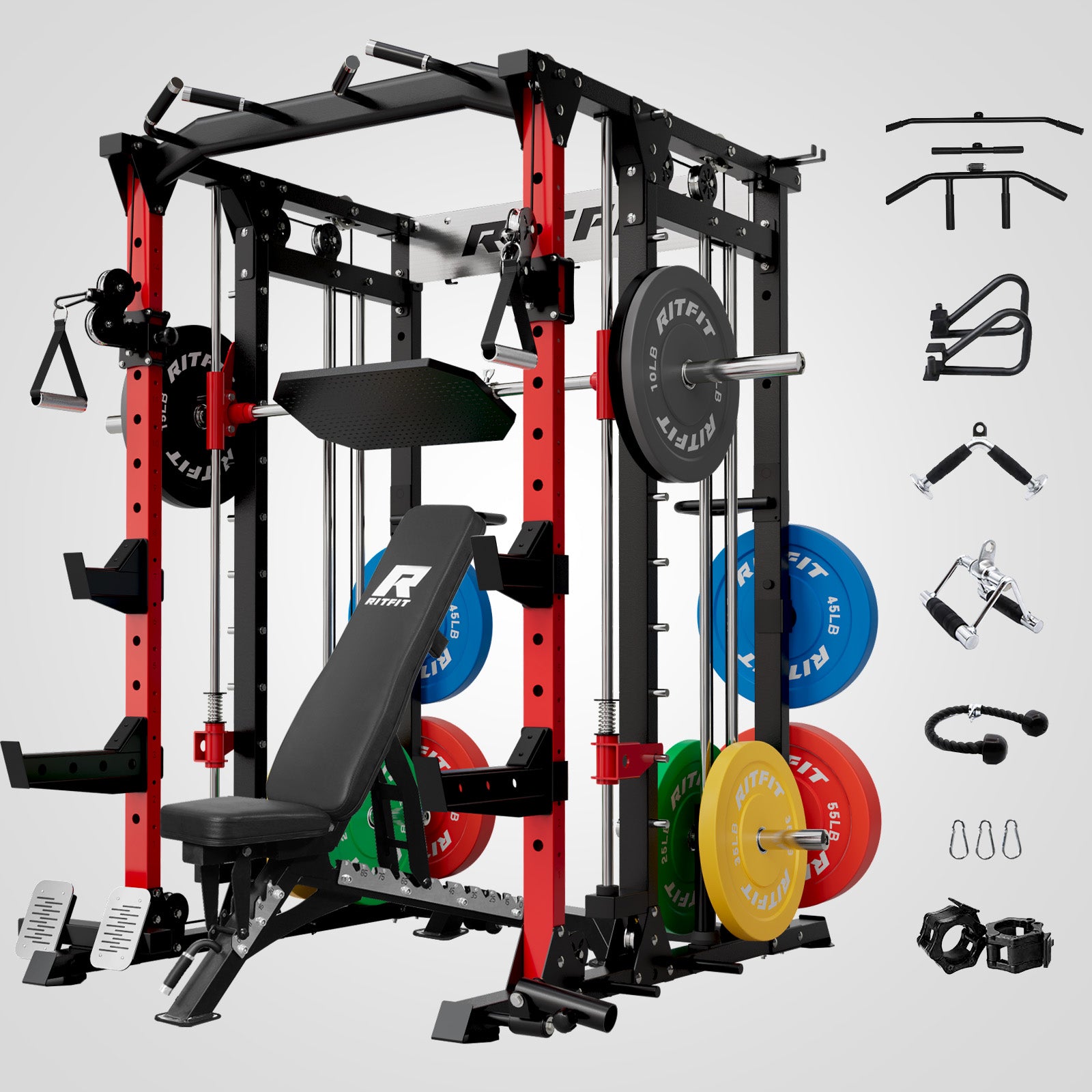Table of Contents
- What is a Swiss Ball Leg Curl?
- Who Should (and Shouldn’t) Do the Swiss Ball Leg Curl?
- Swiss Ball Leg Curl Form and Technique
- Swiss Ball Leg Curl Common Mistakes to Avoid
- Swiss Ball Leg Curl Muscles Worked
- Benefits of the Swiss Ball Leg Curl
- Swiss Ball Leg Curl Variations
- Swiss Ball Leg Curl Alternatives
- Swiss Ball Leg Curl FAQs
The Swiss ball leg curl is a bodyweight posterior-chain exercise that is super popular among fitness enthusiasts who want stronger, more resilient hamstrings without a machine. This workout targets the hamstrings while also challenging your glutes and core to stabilize your hips and spine. It is an effective exercise that is beneficial for people of every fitness level, as long as you choose the right variation and respect proper form.
Even though it seems simple, you must take care of form and posture when performing this workout. In this guide, you’ll learn how to do the Swiss ball hamstring curl safely, common mistakes to avoid, how to warm up, who should be cautious, programming ideas, variations, and practical alternatives when you don’t have a ball.
What is a Swiss Ball Leg Curl?

The Swiss ball leg curl exercise, also known as a Swiss ball hamstring curl, employs the stability ball to induce instability, which compels you to use your abs and balance your body. As the name suggests, it engages the hamstrings and, to a lesser extent, also works the glutes, lower back, and abs.
Because the ball can roll in any direction, your core and hip stabilizers must work hard to keep your body aligned while your hamstrings bend the knees and extend the hips.Research confirms that performing hamstring exercises on unstable surfaces like a Swiss ball significantly increases the co-contraction of core stabilizers[1].
It is an excellent workout to improve the two basic functions of the hamstring: hip extension and knee flexion. The ball lets you train this function of the hamstring while demanding only minimal space, making it ideal for home gyms, small spaces, and travel workouts. Unlike other gym equipment like barbells and dumbbells that require much more space and are also relatively costly, this leg curl is great for beginners and advanced lifters, as different variations can make it more or less challenging depending upon fitness goals.
Who Should (and Shouldn’t) Do the Swiss Ball Leg Curl?
Most healthy lifters can safely use the Swiss ball leg curl, especially as a light-to-moderate accessory exercise. It’s particularly helpful for:
- Desk workers and sedentary people who need stronger hamstrings and glutes for posture and back health.
- Athletes who sprint, jump, or change direction and want more hamstring strength and resilience.
- Home-gym users who lack a dedicated leg curl machine but still want targeted posterior-chain work.
However, you should be cautious or talk to a medical professional or qualified coach before doing this exercise if you:
- Have a recent or unresolved hamstring strain or tear.
- Have uncontrolled lower back pain, sciatica, or a recent spinal injury or surgery.
- Have knee pain that worsens with bending against resistance.
- Are pregnant and find balancing on a ball uncomfortable or unsafe.
If you feel sharp pain (especially in the knee, hamstring, or lower back) during this exercise, stop immediately and get evaluated before continuing.
Swiss Ball Leg Curl Form and Technique
How to Do a Swiss Ball Leg Curl (Step by Step)
- Step 1: Lie down on your back with your legs on the Swiss ball. Place your calves and heels on top of the ball, arms extended at your sides with palms down for support. Keep your head and upper back relaxed on the floor and your spine in a neutral position. This will be the starting position.
- Step 2: Now lift your hips off the ground and squeeze your glutes to press the pelvis upwards, forming a straight line from your shoulders to your knees. Brace your core as if preparing to take a punch so your lower back doesn’t overarch.
- Step 3: Bend your knees and tighten your hamstrings to bring the ball as close to you as possible, digging your heels into it throughout the movement. Keep your hips lifted and avoid letting them sag as the ball rolls in.
- Step 4: Wait a few seconds in this position and then slowly extend your legs, rolling the ball back out under control while keeping your hips off the ground. Lower back down only after you’ve completed the desired reps.
Coaching cue: Think “heels heavy into the ball, ribs down, glutes tight.” Quality of control matters more than how far the ball moves.
Recommended Warm-Up Before Swiss Ball Leg Curls
Before you put weight on your hamstrings on an unstable surface, unlock your joints and lightly work out your posterior chain. A warm-up that is easy to do could be:
- 3 to 5 minutes of light cardio, like walking, biking, or marching in place.
- Perform 10–15 bodyweight hip bridges to activate the glutes.
- 10–15 unweighted “walkouts” (from a plank to a pike and back) or standing leg swings to gently mobilize the hamstrings.
This quick sequence raises core temperature, improves mobility, and reduces the risk of cramping or pulling a muscle once you get on the ball.
Swiss Ball Leg Curl Common Mistakes to Avoid
Not Keeping the Glutes Elevated
Allowing the hips to fall toward the floor is one of the most common mistakes people make when performing Swiss ball hamstring curls. This takes away the focus from the hamstrings, leading to unnecessary pressure on the lower back. To avoid this, hips should be properly elevated the entire time. If you cannot keep your hips up, shorten the range of motion or regress to an easier variation instead of forcing more reps.
Using Momentum
This exercise is not about using momentum to execute. Rather, you must use the hamstring muscles to perform every part of it. This is evident when the ball rolls away from the body rather than staying under control. Focus on making moderate, controlled motions, and only elevate the hips as high as you can to maintain control. A good rule of thumb is a two-second curl in, brief pause, and two-second extension out.
Bad Starting Position
Starting with the ball too far or too close can reduce the effectiveness of this workout. To avoid this mistake, start with the ball close to you then slowly push it away. From the starting position, your legs should be almost straight but not locked out, and your heels should sit comfortably on top of the ball without your toes gripping or over-pointing.
Letting the Knees Cave In or Flare Out
If your knees collapse inward or flare excessively outward, the stress shifts off the hamstrings and onto the knees and hips. Try to keep your knees tracking in line with your hips and ankles, as if your legs are on invisible train tracks. A light miniband just above the knees can help you feel proper alignment.
Swiss Ball Leg Curl Muscles Worked
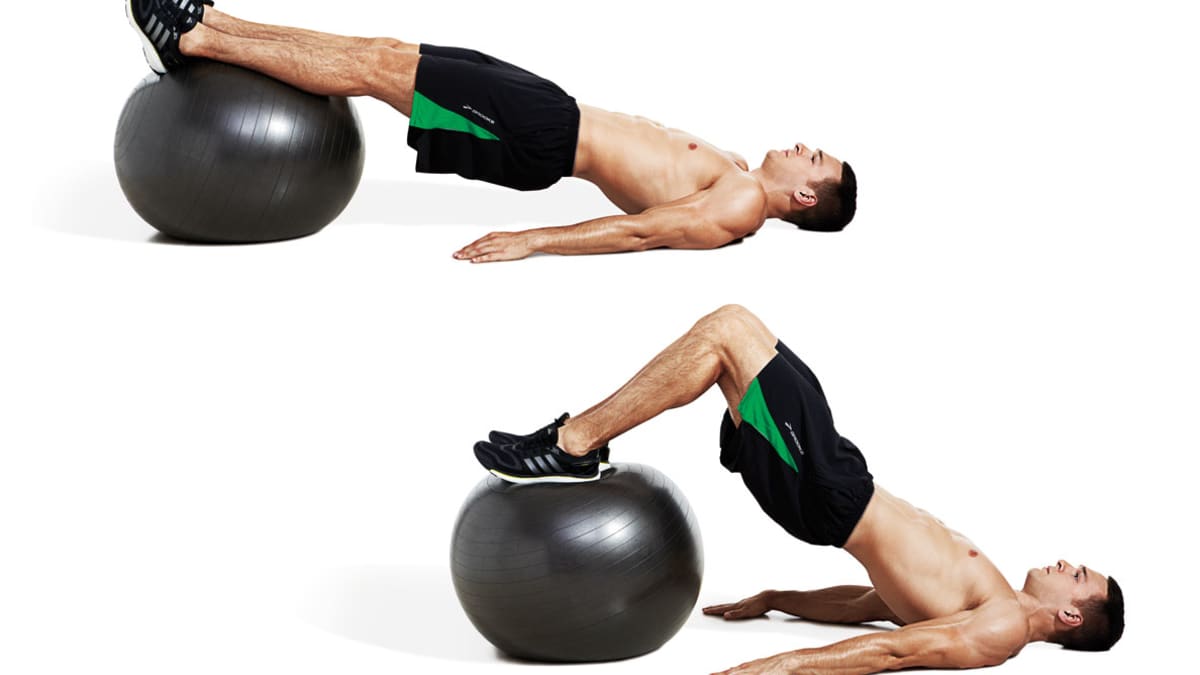
Several muscle groups are used directly or indirectly in leg curls to promote functional strength and enhance balance. The primary muscles engaged in this workout are the following:
Hamstrings

The hamstring muscles go along the rear of the leg. The three hamstring muscles are the biceps femoris, semitendinosus, and semimembranosus. They are the most focused muscles during hamstring curls. Because these muscles cross both the hip and knee, the Swiss ball leg curl trains them in a way that closely mimics real movement patterns like running and jumping.
Glutes

The glutes are the body's largest and strongest muscle group. The gluteus maximus, medius, and minimus are the three muscles that make up the gluteal region, popularly known as the buttocks. The hips are also engaged when elevating to perform this exercise. Strong glutes help keep your pelvis level and protect your lower back as you curl the ball in and out.
EMG studies indicate that the Swiss ball leg curl elicits high levels of gluteus maximus activation to maintain hip extension while the hamstrings flex the knee[2].
Core

The hip and trunk muscles that make up the core surround the spine, abdominal viscera, and glutes. For the upper body to be properly balanced, strong core muscles are crucial. Since balancing is an important element of this workout, the core is frequently engaged. You’ll especially feel the deep core muscles that resist arching your lower back and keep your ribs stacked over your pelvis.
Benefits of the Swiss Ball Leg Curl
- Highly focused exercises like the Swiss ball leg curl may not bring a wide variety of benefits, but they do bring concentrated advantages that carry over to everyday life and sports.
- Spinal stability and balance: The Swiss ball is unstable and tests your balance and stability. This helps you improve spinal coordination, flexibility, and overall stability, especially among sedentary individuals. Over time, better trunk control can mean that you don't have to make as many "tweaks" when you bend, lift, or change direction.
- The Swiss ball leg curl is a targeted workout that strengthens the hamstrings and makes them more durable. Strong hamstrings are important for a lot of fitness activities, like running, jumping, and lifting weights. Stronger hamstrings also help protect the knees by supporting the ACL and other structures that keep the knees stable.
- Better performance in the lower body: Strong hamstrings can help you produce more force when you do lower-body movements like squats, deadlifts, and lunges. As a result, leg curls become a valuable accessory to perform other workouts efficiently. Many lifters notice better lockout strength and more control in the bottom of their squats after 4–6 weeks of consistent hamstring training.
- Joint-friendly accessory work: Because your feet stay fixed on the ball and you control how hard you push, this move can be easier on the spine and knees than heavy barbell work for lifters who need a lower-impact option.
Swiss Ball Leg Curl Variations
The Swiss ball hamstring curl can be done in different styles to cater to different difficulty levels. The most common variations are listed below:
Easier Regression: Bridge Hold with Ball Under Calves
If the full curl feels too advanced, start by simply holding a bridge with your calves on the ball and hips elevated. Focus on squeezing the glutes and bracing the core for 20–30 seconds per set. Once this feels solid, begin adding a small rolling motion in and out.
Swiss Ball Single Leg Curl
To make the curl more challenging and advanced, a single-leg variant can be performed to increase the stability and core strength of experienced lifters. The starting position is similar to the standard Swiss ball hamstring curl, with the exception that one leg is used to move the ball rather than both, while the other leg is left elevated in the air. Keep your hips level and avoid twisting as you curl; if your form breaks, go back to the double-leg version or reduce the range of motion.
Swiss Ball Back Extension
This variant helps activate the lower back muscle while using body weight on the stability ball. The performer starts by laying face down on the stability ball with legs on the floor and arms on the side. Now lift your upper body by contracting your abdominals and lower back muscles. Slowly go back down to the starting position and start the next rep. This is more of a posterior-chain and spinal-extensor accessory exercise than a direct hamstring curl but pairs well in the same session.
Swiss Ball Hip Extension
There are various postures in which to carry out this hip extension variation. The most typical one is to begin by lying on the ball face down with your legs and hands on the floor. Then lift one leg and bring it back down. Don’t bring it all the way to the floor but rather keep it elevated at all times. One leg is focused at a time. This targets the glutes and lower back and can be used as a warm-up or finisher alongside leg curls.
Swiss Ball Bridge
Lie with your head and back on the ball while being face up. The legs stay on the ground, forming a bridge position. Keep the core engaged by keeping the stomach tight and lifting the buttocks. Use leg power as well to lift and bring down the buttocks.
Swiss Ball Leg Curl Alternatives
Lie with your head and back on the ball while being face up. The legs stay on the ground, forming a bridge position. Keep the core engaged by keeping the stomach tight and lifting the buttocks. Use leg power as well to lift and bring down the buttocks. You can add light dumbbells on your hips or increase time under tension to make this more challenging over time.
Progression Ideas
Once the basic double-leg curl becomes easy, you can progress by:
- Slowing the tempo and adding a 2–3 second pause with the ball pulled in.
- Elevating your arms off the floor (crossed over your chest) to reduce base of support.
- Moving to single-leg curls for advanced hamstring and core strength.
Swiss Ball Leg Curl Alternatives
Don't worry if you don't have a Swiss ball or if you do but don't want to include this exercise in your workout regimen. The following alternatives can offer similar benefits for the hamstrings and posterior chain.
Romanian Deadlift (Barbell or Dumbbell)
The Romanian deadlift is a hinge-based movement that loads the hamstrings and glutes through a large range of motion. Keep a soft bend in your knees, hinge at the hips, and maintain a neutral spine as you lower the weights down the front of your thighs. This is an excellent primary strength builder that you can pair with lighter Swiss ball leg curls or use as a substitute when you don’t have a ball.
Glute Bridge or Hip Thrust
Glute bridges (from the floor) and hip thrusts (with your upper back on a bench) focus mainly on the glutes, but the hamstrings work hard as synergists. These are great for lifters who want more hip extension strength without bthemon an unstable surface.
Slider Curls

This exercise also mainly focuses on hamstrings while improving body stability and balance. Slider curls are executed using a slider or a towel placed under your feet to create a smooth, sliding motion. Start by lying on your back with your feet on the sliders and hips off the ground. While keeping your hips raised, slowly slide your heels to be in a bridge position. At the peak of the motion, pause for a little moment before slowly bringing your feet back to the beginning position. Repeat to complete the desired reps. This movement closely mimics the Swiss ball curl and is a perfect alternative for home gyms with smooth flooring.
Kettlebell Snatch (Advanced)
A well-known kettlebell exercise that works the hamstrings and glutes is the snatch. The kettlebell is swung up until it is straight overhead, then it is swung back down. Since it is a great blend of weightlifting and cardio, it is preferred by people with different fitness goals.
However, it is an advanced exercise and beginners cannot perform it effectively without the help of a trainer. It also poses a serious threat of injury if done incorrectly. Treat it as an advanced power exercise rather than a direct replacement for leg curls, and only add it once you’ve mastered basic hinging and shoulder stability work.
Summary
The Swiss ball leg curl is certainly a valuable addition to your fitness routine as it offers lower-body strength and stability. This workout is usually considered safe as it is relatively simple but, regardless, a bad form or posture can lead to injury. Thus, doing it with full concentration and choosing the right variation for your current level is crucial.
All you need to know about the Swiss ball hamstring curl is covered in this article, ensuring that you execute it well and get the most out of your efforts. Start with the easiest version that lets you keep your hips high and your core tight, progress gradually, and always stop if you feel sharp pain instead of “pushing through it.” All that is left to do now is to start doing it.
References
- Sekendiz B, Cuğ M, Korkusuz F. Effects of Swiss-ball core strength training on strength, endurance, flexibility, and balance in sedentary women. J Strength Cond Res. 2010;24(11):3032-3040. doi:10.1519/JSC.0b013e3181d82e70
- Kennedy D, Casebolt JB, Farren GL, Fiaud V, Bartlett M, Strong L. Electromyographic differences of the gluteus maximus, gluteus medius, biceps femoris, and vastus lateralis between the barbell hip thrust and barbell glute bridge. Sports Biomech. 2024;23(12):2935-2949. doi:10.1080/14763141.2022.2074875
Swiss Ball Leg Curl FAQs
How Often Should I Do Swiss Ball Leg Curls?
- If you already squat or deadlift heavily two or more times per week, 1–2 light-to-moderate Swiss ball curl sessions are usually enough.
- If your training is lower intensity and you don’t do many other hamstring exercises, you might use them 2–3 times per week.
How Many Reps and Sets Should I Do for the Swiss Ball Leg Curl?
- Beginners should start small and aim for six to eight reps per set.
- Experienced lifters should perform eight to twelve reps.
- Beginners should start with one to two sets for muscle activation.
- Experienced people who focus on weightlifting should do three to four sets to improve endurance and flexion.
How Do I Add the Swiss Ball Leg Curl to My Routine?
- As an accessory after squats or deadlifts to give your hamstrings extra attention.
- As part of a posterior-chain “giant set” with glute bridges and back extensions.
- As a light activation drill in your warm-up, using fewer sets and reps.
How Do I Progress with the Swiss Ball Leg Curl?
- Learn the form – Start by gaining as much knowledge as possible then practice the stance and actions until you can control it.
- Increase the frequency – Increase the reps and sets over time as your capability improves.
- Include variations – Try out variations of the Swiss ball hamstring curls, such as single-leg curl and ball bridge.

